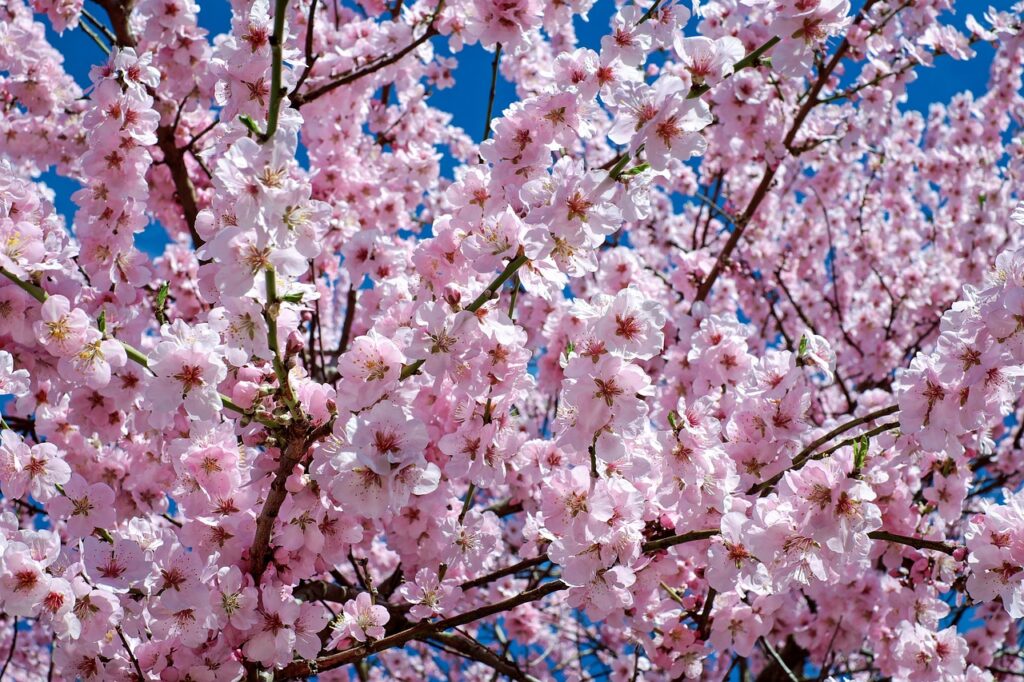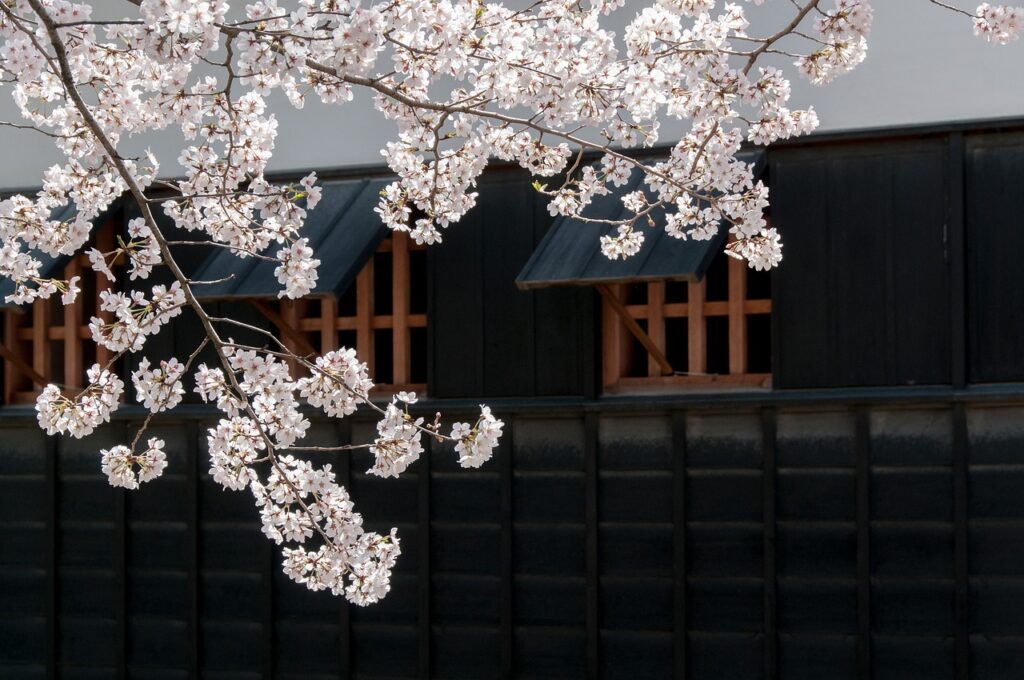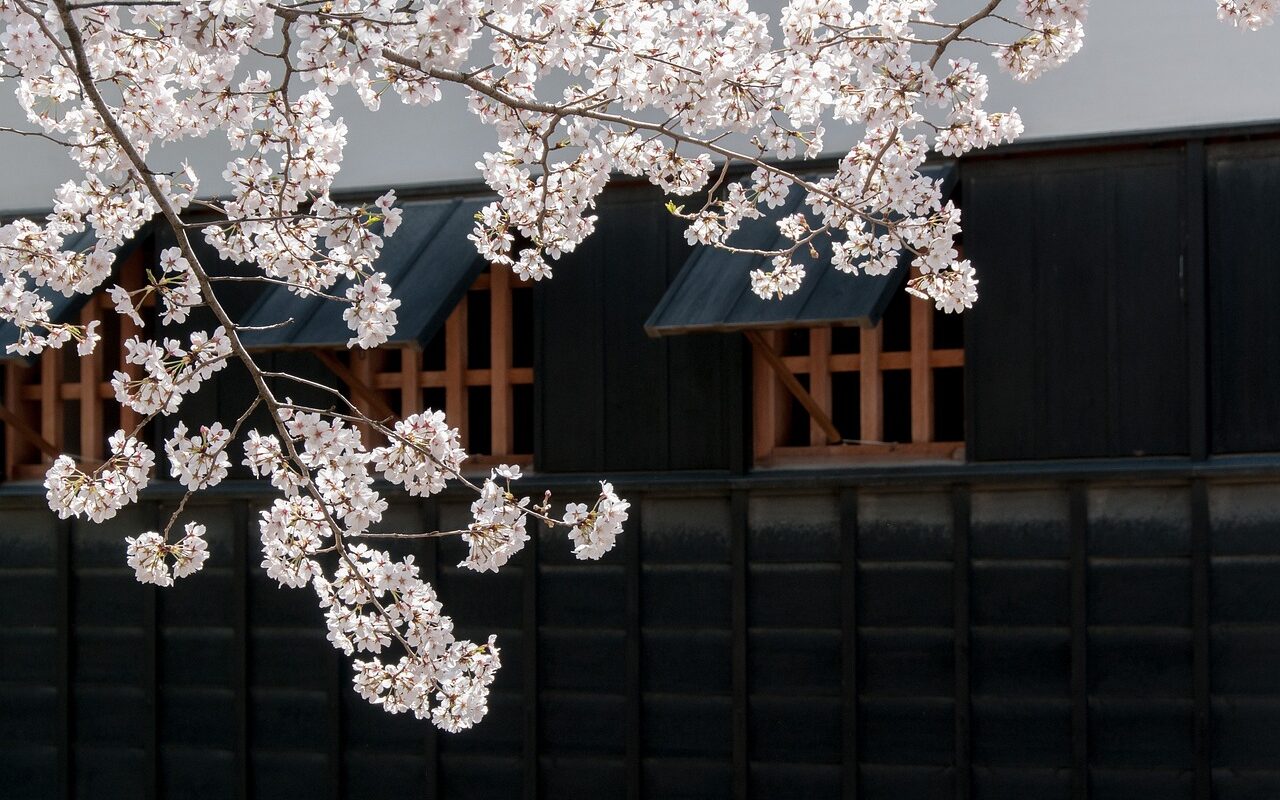Chapter 1: Introduction to Sakura
Many people may not be familiar with sakura, an important part of Japanese culture, so I would like to introduce it.
Sakura, especially a variety known as Somei Yoshino, is known as a harbinger of spring in Japan, capturing the hearts of many with its fleeting beauty. The blooming period of sakura flowers is short, often lasting less than a week, but the event of “hanami,” where people enjoy the full bloom of sakura in this brief period, has been cherished by the Japanese since ancient times.
There are various theories about the origin of sakura, but it is certain that they have existed in Japan since ancient times. Sakura has been frequently mentioned in classical Japanese literature and poetry, with numerous verses praising its beauty and ephemerality. Works from the Heian period, such as “The Tale of Genji” and the “Manyoshu,” also feature sakura, indicating its special place in Japanese culture from that time.
The “transience” of sakura flowers is deeply connected to Japanese sensibilities and values. Sakura blooms suddenly and scatters just as quickly. This ephemeral nature of sakura has been embraced as a symbol of beauty in Japan. Behind this lies the Japanese sensitivity to the fragility of life and the beauty of moments.
The color of sakura flowers also has a deep relationship with Japanese aesthetics. The pale pink color is perceived as a “subdued hue” favored by the Japanese and has been incorporated into various items, including traditional clothing and everyday tools. This color palette symbolizes traditional Japanese aesthetics and continues to be loved by many.
The sakura tree itself is an indispensable part of the Japanese landscape. Sakura trees can be found in various places, such as temple and shrine precincts, schools, parks, and along rivers. They are known as trees that can be enjoyed for their seasonal changes, offering flowers in spring, green leaves in summer, and autumn foliage.
Sakura is highly regarded not only in Japan but also overseas, and sakura trees have been planted in many countries. Whether as gifts from Japan or to experience Japanese culture, the care given to sakura trees demonstrates their universal beauty.
Thus, sakura is a flower deeply connected to Japanese culture, sensibilities, and history, and its beauty and transience continue to enchant the hearts of the Japanese.

Chapter 2: Historical and Cultural Background
I will share how sakura has developed in Japan throughout history, intertwining with historical and cultural contexts.
The history of sakura is very old, with many literary works and songs from the Nara and Heian periods featuring it. The ancient poetry collection “Manyoshu” contains numerous poems praising sakura, showing the deep affection and impression the Japanese have had for sakura since that era. Sakura has been touched upon in many poems, songs, and stories as an embodiment of the Japanese seasons.
During the Heian period, sakura viewing became popular among the nobility. Unlike today’s lively events, sakura viewing at that time was a quiet affair, centered around contemplating sakura blossoms in gardens while composing poetry and songs. Sakura was positioned as something ephemeral and beautiful within Heian culture.
In the medieval period, sakura viewing became enjoyed by samurai and commoners alike. Especially during the Edo period, sakura trees began to be planted throughout cities, and the culture of hanami spread. In this era, sakura was frequently depicted in ukiyo-e and literary works, taking on an even more significant role in Japanese culture.
Since the Meiji period, despite Western cultural influences, the affection for sakura has remained unchanged, continuing to the present day. Today, sakura viewing is a major spring event, beloved by many. Sakura spots are found all over Japan, from parks and riverbanks to mountain slopes, attracting many visitors each year.
Moreover, sakura is deeply connected to Japanese cultural events and ceremonies. Spring events such as graduation and entrance ceremonies often coincide with the blooming of sakura, making it a symbol of new beginnings and farewells for many Japanese.
Historically, sakura has been deeply intertwined with the Japanese climate and culture. Its beauty and transience reflect Japanese sensibilities and values, and its allure has been expressed in many literary works, songs, and paintings. Understanding this historical and cultural background can deepen the emotional impact when viewing sakura.
Chapter 3: Sakura in Modern Times
I will introduce what sakura is like in modern Japan.
Sakura continues to be a symbol of culture that is beloved in contemporary Japan. With the arrival of spring, sakura blossoms flourish in both urban and rural areas, soothing people’s hearts. When the term “sakura front” is mentioned in news and weather forecasts, many begin preparations and plan for hanami.
Modern sakura viewing is a lively and enjoyable event, different from the ancient tranquility. Parks and riverbanks are filled with groups of families, friends, and couples, with laughter and singing filling the air. Food stalls line up, offering various foods and drinks, making meals under the sakura trees a special experience.
In recent years, viewing sakura at night has also gained popularity. Illuminated sakura offers a different, fantastical beauty, becoming a spot for many photographers and tourists. Especially, the combination of historical buildings and sakura is considered a spectacular view, with many photos shared on social media.
Furthermore, sakura as a tourism resource has also garnered attention. Tourists from outside Japan visit during the sakura season to experience its beauty. Consequently, tourist spots provide multilingual guidebooks and information, promoting Japanese culture through sakura.
In the world of contemporary art and fashion, sakura inspires many creators. The theme of sakura is increasingly featured in movies, anime, and music, creating new attractions every day.
In conclusion, sakura in modern Japan continues to be loved by many, playing a significant role in culture and customs. From the heart of cities to small rural communities, sakura is a part of the Japanese landscape, heralding the arrival of spring. The fusion of diverse modern cultures with sakura will continue to create new charms.

Chapter 4: Famous Works Featuring Sakura
I will introduce famous works that feature sakura.
Sakura, with its brief beauty and fleeting life, has been featured in a wide range of cultural works in Japan, such as poetry, literature, movies, and music, providing inspiration and empathy across generations.
In classical literature, one cannot overlook “The Pillow Book” from the Heian period. It contains the phrase, “What is it that most fleetingly? Is it the cherry blossoms or the moon?” This passage highlights sakura and the moon as the most transient and beautiful things in the world. Sakura has also been a popular subject for many poets and haiku masters. As a symbol of spring, and as an emblem of life’s transience and beauty, countless poems and verses have been written about sakura.
In the realm of film, sakura serves as an important motif. For example, in Akira Kurosawa’s “Seven Samurai,” the samurai’s final battle takes place under a sakura tree. This scene juxtaposes the samurai’s fight with falling sakura petals, layering life and death with beauty and ephemerality. In anime and manga, sakura often appears as a background or symbol, enhancing emotional scenes such as confessions under sakura trees or decisive battles amid falling blossoms.
In music, there are numerous songs themed around sakura, from J-POP to rock, and traditional Japanese music. Songs about the beauty and ephemerality of sakura are beloved by many listeners.
As such, sakura has been featured by many creators and artists in Japanese cultural works. Works themed around sakura continue to capture the hearts of people across time and genres. The beauty and transience of sakura, along with the philosophies and thoughts it embodies, will continue to be conveyed in many works.
Chapter 5: Conclusion
This is a summary of sakura.
Sakura can be considered a symbol of Japan, with its beauty and transience deeply rooted in the hearts of the Japanese. This paper has discussed sakura from its introduction to its historical background, its presence in modern times, and its depiction in famous works.
From a historical perspective, sakura has been integrated into Japanese life, culture, and religion from ancient times. Sakura, with its courtly and folk customs and religious background, has deeply influenced Japanese aesthetics and sensibilities. In modern times, the allure of sakura remains undiminished, with various events and ceremonies such as sakura viewing taking place across the country. These facts indicate how special sakura is to the Japanese.
Moreover, the creation of many works featuring sakura speaks to its enduring popularity. Sakura has been featured in various genres, from poetry and novels to films and music, with each creator and artist infusing their own thoughts and philosophies into sakura. Through these works, the beauty and ephemerality of sakura, along with the associated emotions and sadness, have been shared with many people.
In summary, sakura is deeply engraved in Japanese culture, history, and hearts, and its charm will continue to be loved across generations. The season when sakura blooms is a special time for us, and the beauty and emotions we experience during this brief period will remain in our hearts forever.
